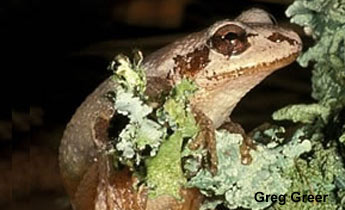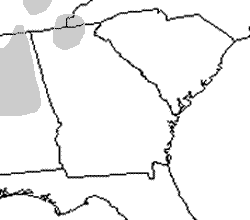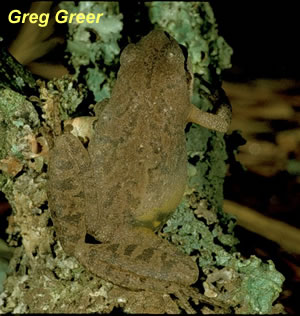Mountain Chorus Frog (Pseudacris brachyphona)
Mountain Chorus Frog (Pseudacris brachyphona)



Description: A small chorus frog (25–38 mm; 1–1.5 in) ranging in color from gray to olive. The dorsum typically bears paired markings that resemble reversed parentheses; in some individuals, the marks connect, forming an “X.” This pattern is similar to that of the Spring Peeper (Pseudacris crucifer), but a dark triangle can distinguish the Mountain Chorus Frog between the eyes, which the Peeper lacks. Like other chorus frogs, it has a pale line along the upper lip. Concealed surfaces of the hind legs show yellow flash coloration. In the Southeast, range alone (restricted to the north Georgia mountains) is often sufficient to eliminate this species during identification.
Range and Habitat: It occurs in two disjunct populations: one across the central Appalachian Mountains (West Virginia, Kentucky, Ohio, Pennsylvania) and another in central and northern Alabama. It is limited to a small portion of the north Georgia mountains within the Southeast. It prefers upland woodlands and forested hillsides, generally above 1,070 m (3,500 ft). This chorus frog breeds in shallow aquatic habitats, including pools, roadside ditches, and quiet stream margins.
Habits: Secretive outside of the breeding season. Most commonly encountered from March to May when males gather at woodland pools and call both day and night. Tadpoles are small and metamorphose after 40–65 days. Adults are rarely seen during summer, presumably sheltering in leaf litter and feeding on small invertebrates.
Call: A rapid, high-pitched, nasal series of notes, resembling the sound produced when running a finger across the teeth of a comb. Compared to the Upland Chorus Frog (P. feriarum), P. brachyphona produces a more rapid and nasal call.
Conservation Status: Poorly studied in the Southeast; thought to be declining in parts of its northern range.

